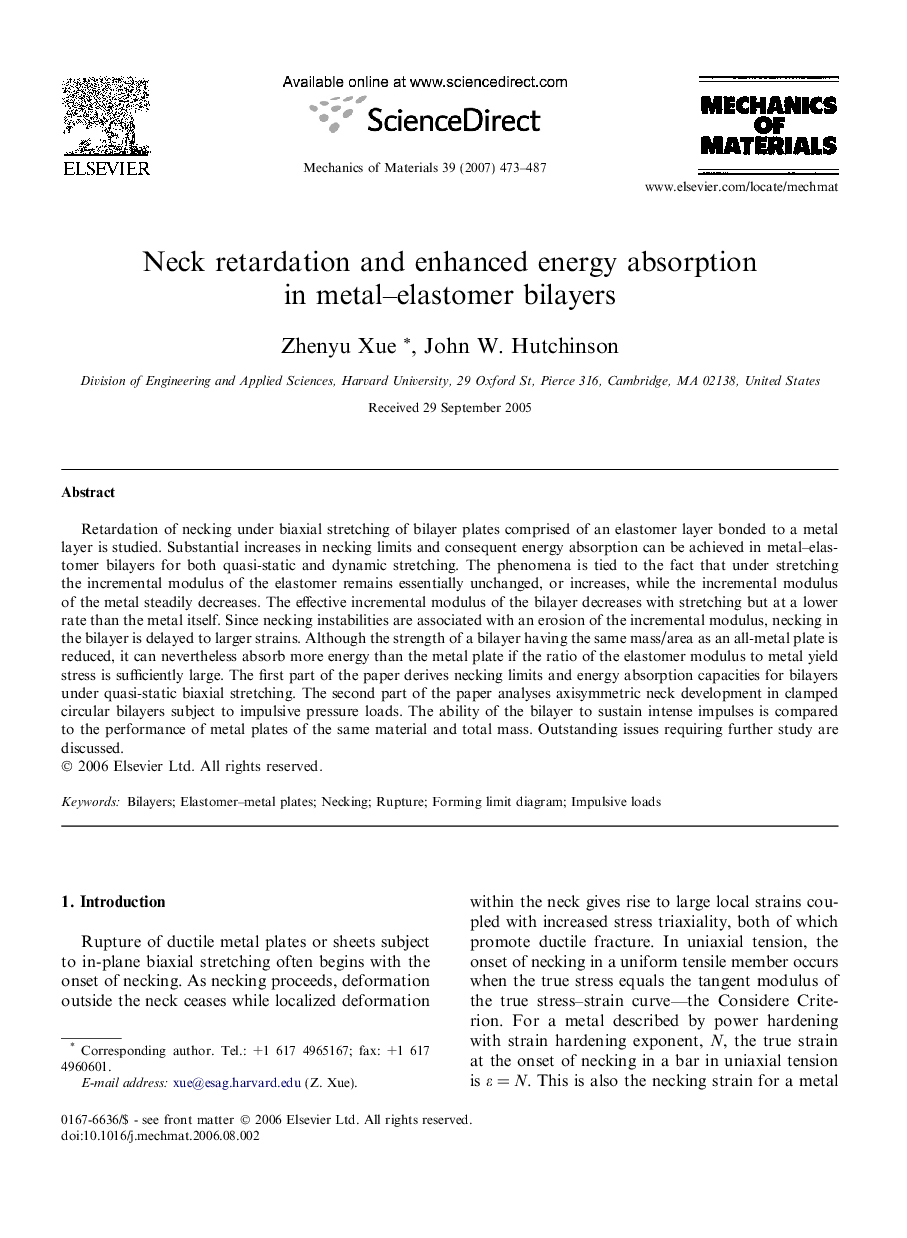| Article ID | Journal | Published Year | Pages | File Type |
|---|---|---|---|---|
| 800368 | Mechanics of Materials | 2007 | 15 Pages |
Retardation of necking under biaxial stretching of bilayer plates comprised of an elastomer layer bonded to a metal layer is studied. Substantial increases in necking limits and consequent energy absorption can be achieved in metal–elastomer bilayers for both quasi-static and dynamic stretching. The phenomena is tied to the fact that under stretching the incremental modulus of the elastomer remains essentially unchanged, or increases, while the incremental modulus of the metal steadily decreases. The effective incremental modulus of the bilayer decreases with stretching but at a lower rate than the metal itself. Since necking instabilities are associated with an erosion of the incremental modulus, necking in the bilayer is delayed to larger strains. Although the strength of a bilayer having the same mass/area as an all-metal plate is reduced, it can nevertheless absorb more energy than the metal plate if the ratio of the elastomer modulus to metal yield stress is sufficiently large. The first part of the paper derives necking limits and energy absorption capacities for bilayers under quasi-static biaxial stretching. The second part of the paper analyses axisymmetric neck development in clamped circular bilayers subject to impulsive pressure loads. The ability of the bilayer to sustain intense impulses is compared to the performance of metal plates of the same material and total mass. Outstanding issues requiring further study are discussed.
